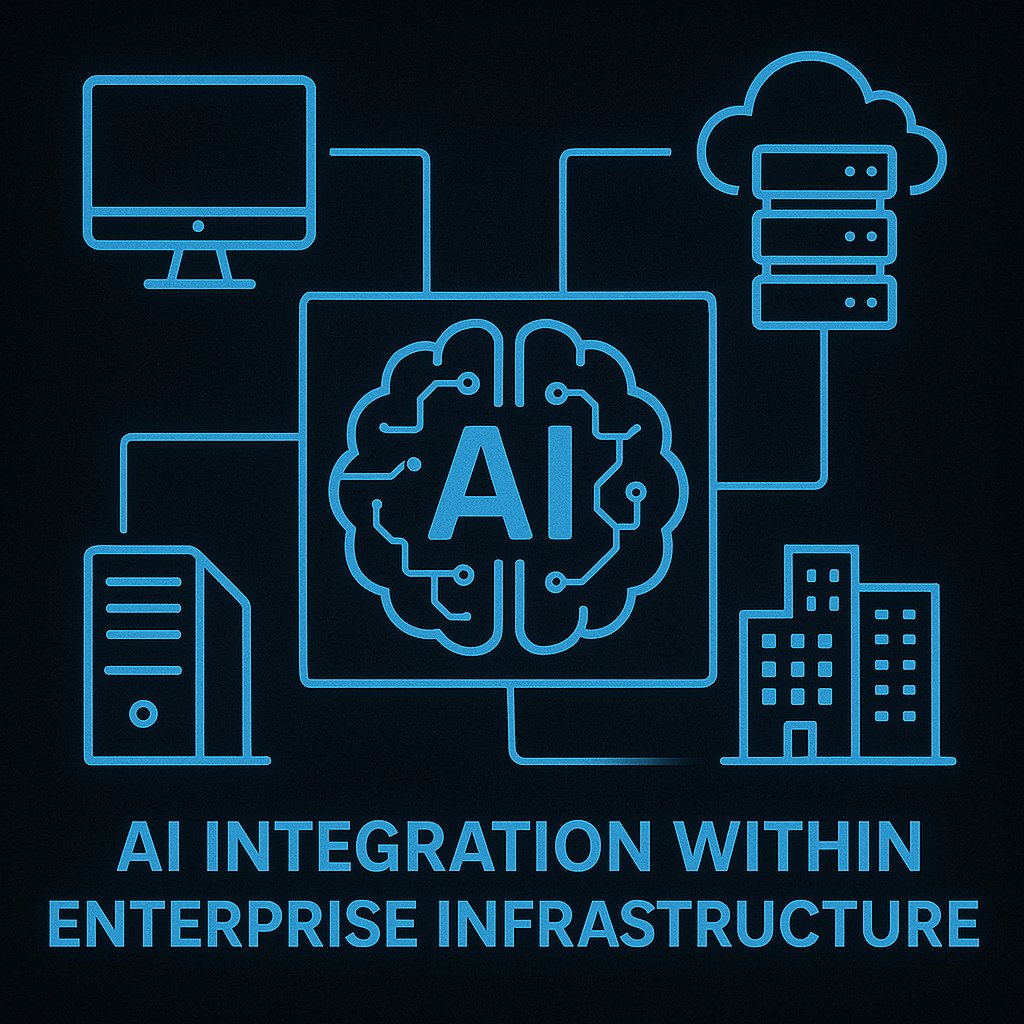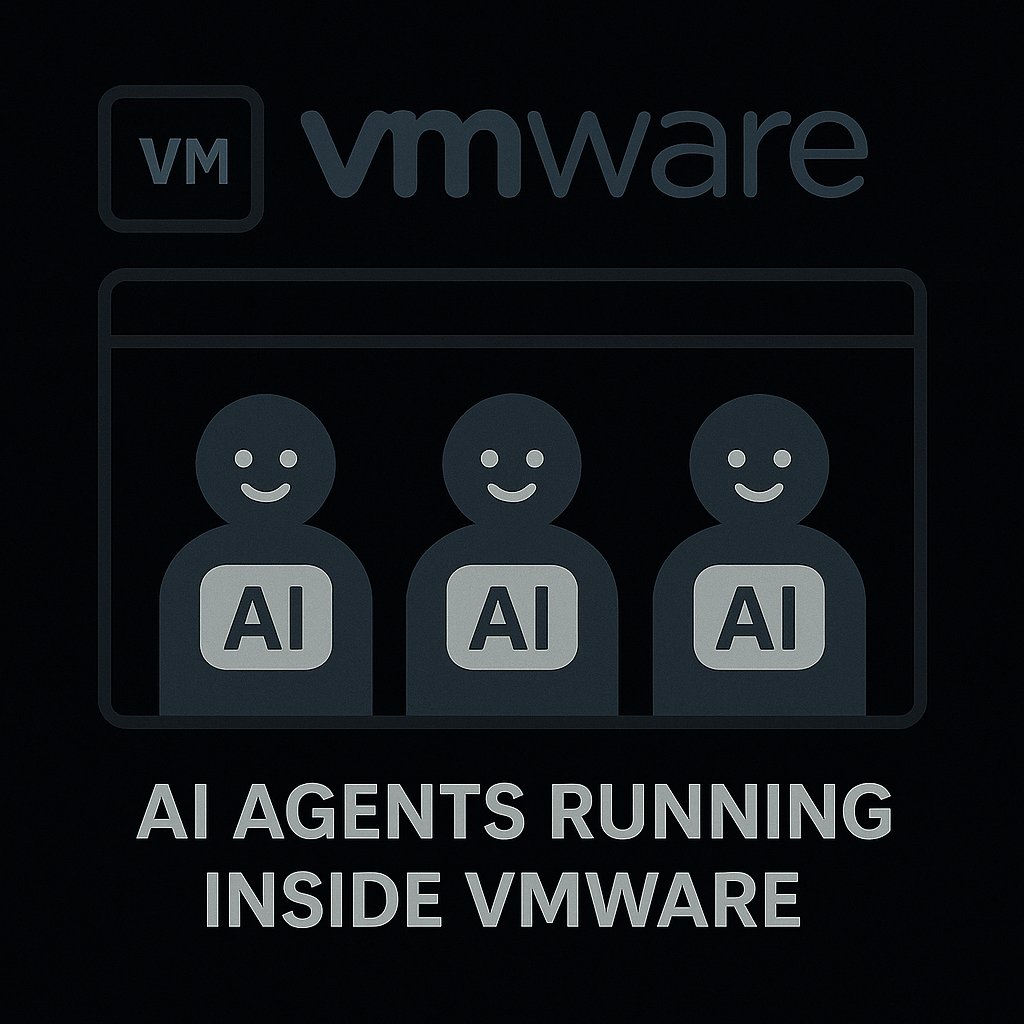Artificial intelligence is no longer just a futuristic concept; it is rapidly becoming a cornerstone of enterprise infrastructure. As organizations strive to harness the power of AI, they face both exciting opportunities and daunting challenges in their journey toward effective VMware AI integration. VMware, renowned for its robust virtualization and cloud solutions, is at the forefront of this AI integration.
However, the path to successful AI adoption is filled with obstacles, including integrating legacy systems and the complexities of deployment. With ‘VMware AI integration’ emerging as a focal point, businesses must understand the implications of this transformation and navigate it effectively. Companies that do not adapt risk being left behind, while those that embrace AI with strategic foresight stand to gain a significant competitive edge in an increasingly automated world.
Current Trends in AI Integration
As we move further into 2024, the integration of artificial intelligence (AI) into enterprise infrastructure has become the defining trend for major technology players, notably VMware, IBM, and Broadcom. These companies are leveraging AI to transform their offerings and are becoming integral to enterprises’ strategic initiatives.
VMware’s AI Initiatives
VMware has taken significant steps towards making its platforms AI-native. The launch of the VMware Private AI Ready Infrastructure in May 2024 highlights this trend. This solution allows organizations to deploy AI workloads effectively by providing a modular architecture powered by GPU-oriented VCF workload domains. It simplifies the complexities of managing AI infrastructures through validated configurations and serves as a vital resource for enterprises looking to adopt AI efficiently [VMware Blog].
Moreover, VMware’s Aria Automation now features Private AI Automation Services, introduced in March 2024, enabling cloud administrators to manage and deliver AI infrastructure effortlessly via its self-service portal. This effort is part of VMware’s broader strategy to ease AI deployment while effectively handling its operational complexities [Core VMware].
As VMware progresses, their goal is to make the VMware Cloud Foundation 9.0 (announced in August 2025) fully AI-native, enabling enterprises to implement robust, secure, and scalable private cloud infrastructures [Broadcom News].
Broadcom’s Involvement in AI
Broadcom’s influence in AI integration is also noteworthy; they are working on developing custom AI chips tailored for cloud environments, forecasted to advance AI hardware capabilities effectively. A notable breakthrough is their 3.5D XDSiP technology aiming to enhance semiconductor speeds and increase memory to meet the growing demands of generative AI [Reuters]. Furthermore, Broadcom has reported substantial growth in AI-related revenue, showcasing the increasing significance of AI within its business model [Reuters].
Critical Perspectives
While AI integration brings forth numerous opportunities, it also poses several challenges. Critical considerations include data privacy and security, as emphasized by VMware’s approach to keeping AI services near data sources to ensure sensitive data remains protected [NVIDIA Newsroom]. Moreover, the complexity around integrating AI workloads within existing infrastructures remains a concern. VMware’s development of solutions like the Private AI Ready Infrastructure reflects their awareness of these challenges and commitment to addressing them successfully [VMware Blog].
In summary, the current landscape of AI integration in enterprise infrastructures is evolving swiftly, with companies like VMware, Broadcom, and IBM leading the charge. Their initiatives aim to create flexible, robust, and efficient AI solutions that not only enhance current offerings but also address critical challenges such as data management, privacy, and infrastructure complexity that enterprises must navigate in this new era of technology.
VMware’s AI Integration Strategy
VMware is strategically integrating AI into its Cloud Foundation through a series of innovations aimed at simplifying AI deployment and enhancing enterprise capabilities. The introduction of VMware Private AI Services marks a significant advancement in their offerings.
- VMware Cloud Foundation 9.0 Overview: Coming in 2025, VCF will become an AI-native platform, integrating various AI services that enhance security and manageability for enterprises. Features like GPU Monitoring, Model Store, and Data Indexing make it easier for organizations to deploy AI models securely and efficiently.
- Private AI Automation Services: Designed to streamline AI workloads, this service provides cloud administrators tools to manage, curate, and deliver AI models through a self-service portal, facilitating quicker and more effective deployment processes.
- Industry Perspectives: As noted, ‘VMware may be sprinkling the deals between it and its customers with a little AI fairy-dust, but it knows that its long-term income is guaranteed by the presence of legacy infrastructure at the core of the enterprise.’ This critical insight reflects VMware’s understanding of its foundational market while also aiming to innovate.
- Ecosystem Expansion: Collaborations with companies like NVIDIA enhance VMware’s AI foundations, allowing the integration of cutting-edge technologies that bring generative AI capabilities into the mix.
In summary, VMware’s AI integration strategy not only focuses on enhancing its Cloud Foundation through AI-native features but also provides critical tools and services that address the complexities of AI deployment, ensuring enterprises can leverage AI without compromising security and efficiency.
Comparative Analysis of VMware vs. Competitors in AI Integration
As companies strive to integrate artificial intelligence (AI) into their infrastructure, VMware, Nutanix, and IBM stand out as leading players in this space. This section will analyze their pricing models, technology features, and market positioning, especially in light of recent competitive dynamics following Broadcom’s acquisition of VMware.
Nutanix
- Pricing Models: Nutanix adopts a flexible subscription-based pricing model, allowing customers to pay for the resources they use. This model aligns costs with actual consumption, thus appealing to organizations seeking scalability. [Futurum Group]
- Technological Features: Nutanix has unveiled innovations like GPT-in-a-Box, combining its infrastructure with NVIDIA’s GPUs to support AI workloads seamlessly. It presents a streamlined IT operation model that is increasingly attractive for enterprise applications. [Futurum Group]
- Market Positioning: Nutanix holds a strong position in the Gartner Magic Quadrant for Distributed Hybrid Infrastructure, indicating solid strategic execution. Its partnership ecosystem with big players like Cisco and Dell further enhances its market reach. [Nutanix, Inc]
IBM
- Pricing Models: IBM provides various pricing options, including subscription and consumption-based models. This approach allows companies to adopt AI capabilities without a significant upfront cost, giving them more flexibility. [IBM]
- Technological Features: IBM is bolstering its AI capabilities through enhanced partnerships and expansions in GPU support across its watsonx platform. These developments afford a robust high-performance ecosystem aimed at enterprise-grade AI workloads. [IBM]
- Market Positioning: With a focus on hybrid cloud solutions, IBM aims to integrate AI seamlessly into existing infrastructures, thereby enhancing its competitive edge in AI applications. Their focus shifts toward open-source solutions and strategic partnerships post-acquisition of Red Hat. [IBM]
VMware
- Pricing Models: Post-Broadcom acquisition, VMware has seen shifts in its pricing model, moving towards subscription-based systems which, while advantageous for some, have raised concerns over rising costs for existing customers. [AINVEST]
- Technological Features: VMware’s efforts in streamlining its VT offerings under the VMware Cloud Foundation are ongoing, yet specific post-acquisition integration details remain sparse. The aim is to enhance AI capabilities through innovative infrastructure solutions. [AINVEST]
- Market Positioning: Previously a dominant force in virtualization, VMware’s role is now under scrutiny as competitors like Nutanix actively entice its customer base. Broadcom’s ownership introduces uncertainty in product direction, challenging VMware’s traditional market grasp. [CEOWORLD]
| Feature/Aspect | VMware | Nutanix | IBM |
|---|---|---|---|
| Primary Service | VMware Private AI Services, VCF 9 | GPT-in-a-Box | Watsonx |
| Pricing Model | Subscription-based | Usage-based subscription | Subscription/Consumption models |
| Key Features | AI-native architecture, GPU support | Integration with NVIDIA GPUs | Enhanced GPU support, open-source |
| Customer Adoption | Gaining traction post-acquisition | Strong in hybrid infrastructure | Focused on enterprises using hybrid cloud |
| Market Position | Traditional virtualization leader but facing competition | Leader in hybrid infrastructure | Focus on AI in hybrid cloud solutions |
Expected Outcomes of AI Integration Within Enterprises
As organizations increasingly adopt artificial intelligence (AI), the impact on productivity, decision-making, and cost-efficiency becomes evident. AI integration within enterprise infrastructures, particularly through solutions like VMware, promises to reshape how businesses operate and compete in today’s digital landscape.
Enhancing Productivity
AI technologies, such as automation and machine learning, significantly increase operational efficiency. By automating routine tasks, reducing downtime, and optimizing resource allocation, AI enables employees to focus on higher-value activities. VMware’s AI-native solutions, like the VMware Cloud Foundation, facilitate seamless integration of AI workloads into existing environments, thereby streamlining processes and enhancing productivity.
Data-Driven Decision-Making
AI empowers enterprises to utilize data more effectively, transforming it into actionable insights. With advanced analytics and machine learning algorithms, organizations can make informed decisions faster than ever before. For instance, VMware’s Private AI Services provide tools for data processing and analysis in real-time, helping leaders respond to market changes swiftly and strategically. This enhanced decision-making capability fosters innovation and positions companies at the forefront of their industries.
Cost-Efficiency
Integrating AI solutions can lead to significant cost reductions. By minimizing operational expenses associated with manual labor and inefficient processes, enterprises can realize substantial savings. VMware’s focus on AI-native infrastructure reduces the costs related to hardware and software management, enabling companies to allocate resources more efficiently. Furthermore, AI can help identify areas for improvement and optimization, allowing enterprises to maximize their ROI on technology investments.
Challenges and Pitfalls
Despite the promising outcomes, the journey toward AI integration is not without challenges. Issues such as data privacy and security must be addressed comprehensively. Organizations must ensure compliance with regulations while managing sensitive information within AI systems. Additionally, the complexity of integrating AI with existing legacy systems can pose significant hurdles, potentially delaying deployment and realization of benefits.
Conclusion
The integration of artificial intelligence into enterprise infrastructure is not merely a trend but a necessity for organizations looking to thrive in today’s competitive landscape. VMware stands as a pivotal player in this evolution, leveraging its Cloud Foundation to introduce AI-native capabilities that simplify deployment and enhance operational efficiency.
Throughout this article, we have examined VMware’s strategic initiatives, including the launch of VMware Private AI Services and the upcoming VCF 9.0, positioning the company at the forefront of AI integration within enterprise environments. As VMware navigates the complexities of this integration, it acknowledges the importance of addressing legacy infrastructure challenges, ensuring that enterprises can transition smoothly into an AI-driven future.
Moreover, the competitive landscape reveals a pressing need for companies not only to adopt AI but also to integrate it thoughtfully within their existing frameworks. The juxtaposition of VMware’s innovations against competitors like Nutanix and IBM showcases a vibrant market where businesses can capitalize on AI to gain a competitive edge.
Looking ahead, enterprises that embrace AI integration are bound to experience enhanced productivity, improved decision-making, and significant cost-efficiencies. However, the path to successful adoption is fraught with challenges, including the imperative of data security and the integration of innovative solutions into legacy systems. The key takeaway is clear: as AI continues to redefine operational paradigms, companies that proactively invest in its integration will be better positioned to adapt and excel in a future increasingly guided by intelligent technologies.
This forward-thinking approach is vital, as the capabilities provided by AI promise not only to revolutionize business operations but also to shape the design and structure of future enterprises. Without doubt, the impact of AI on enterprise infrastructure is profound, and its influence will only grow as we advance further into the digital age.

References
- Nutanix Preps for VMware Takeover, Generative AI Wave
- Nutanix is Named a Leader in 2024 Gartner Magic Quadrant
- Broadcom Launches new Tomahawk Ultra Networking Chip in AI Battle Against Nvidia
- Nutanix CEO sees multi-year opportunity after Broadcom’s VMware Acquisition
- CISPE Files Official EC Legal Complaint Against Broadcom’s VMware Takeover
- Broadcom’s VMware Acquisition One Year Later: Impact, Strategies, and Market Response

